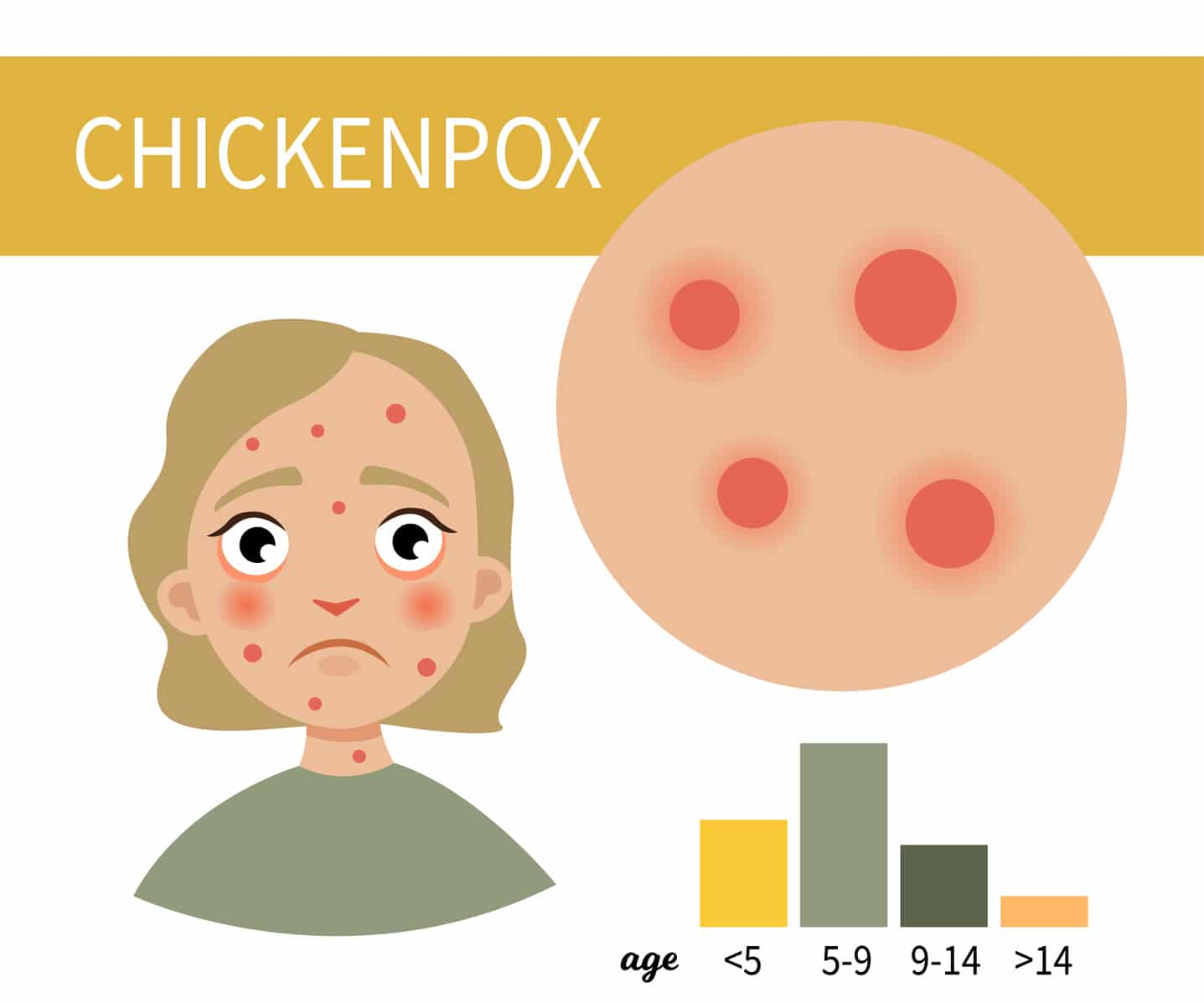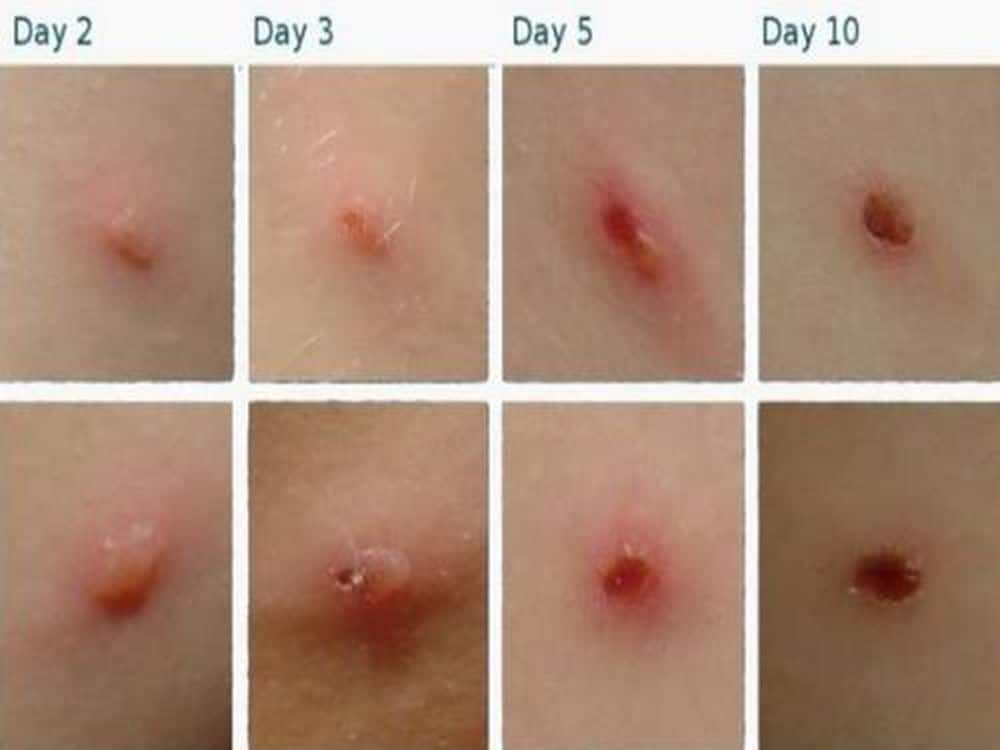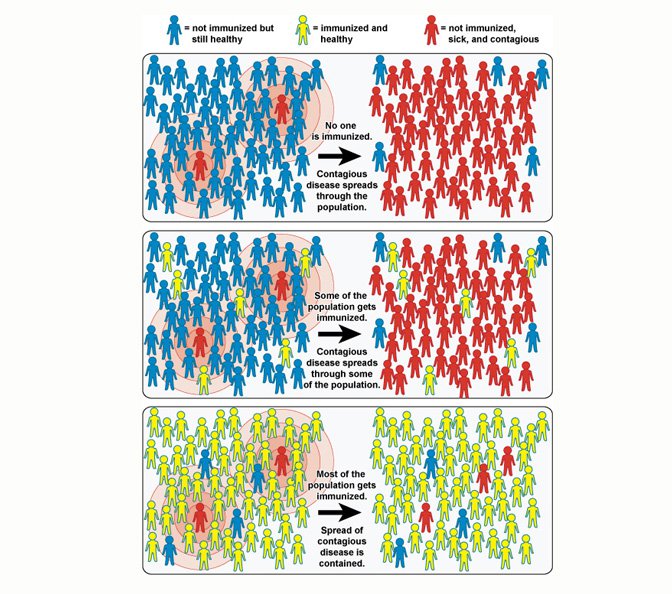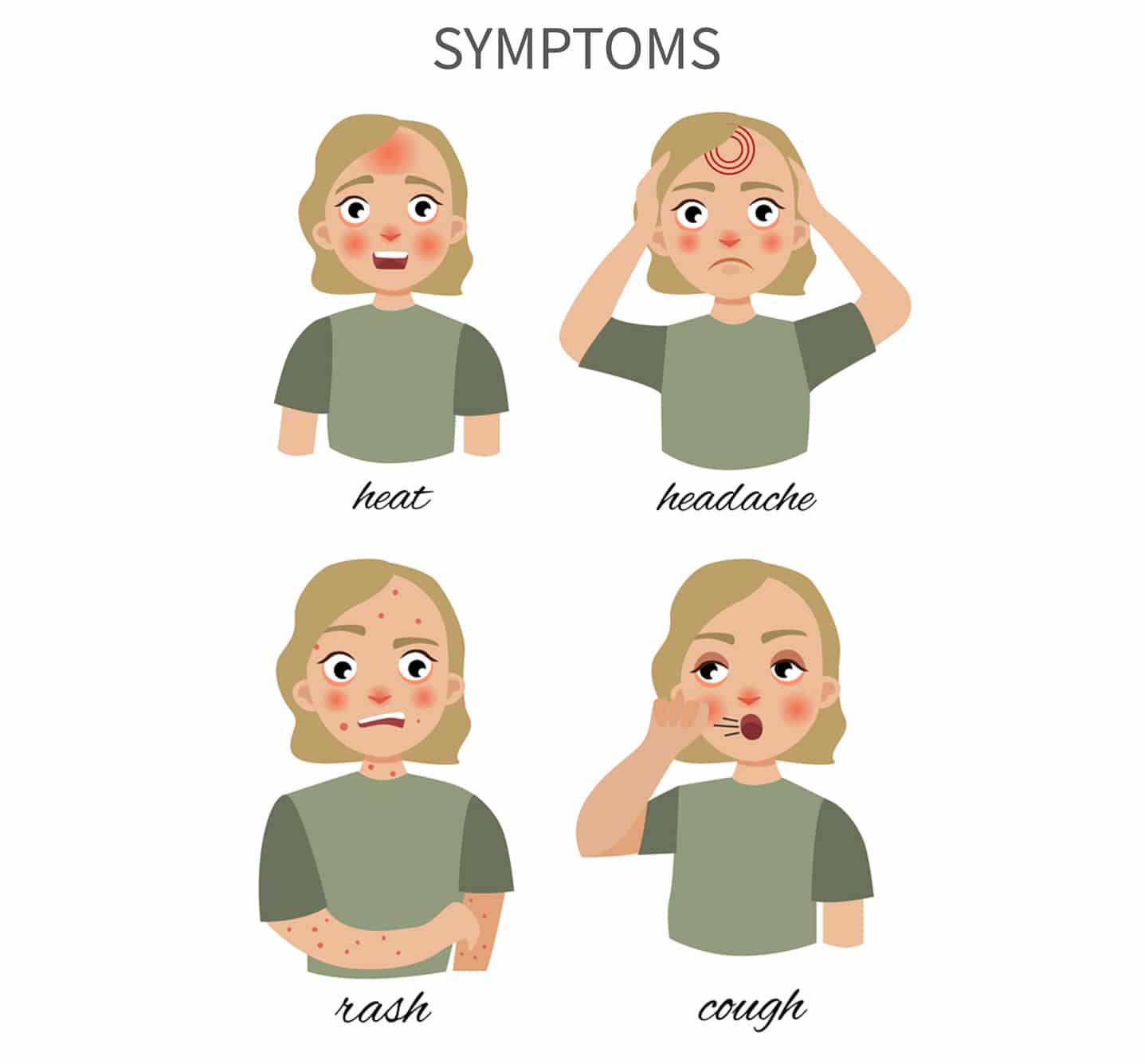Chicken Pox
What is Chicken Pox?
The chicken pox virus, also known as Varicella-Zoster Virus and human herpesvirus 3, used to be a very common childhood disease. Humans are the only source of this disease. It is spread by airborne route, from a person who has the disease. This means that it can be spread from the actual lesions or from the respiratory secretions of a sick person; like coughs or sneezes. It was most commonly seen in school-aged children, but with current vaccine requirements and recommendations, it is increasingly rare. Between 1995 and 2005, in the first 10 years of vaccinating, the incidence of chicken pox decreased by 90% and has decreased further since adding a booster dose. Most people who have the vaccine or the disease have lifelong immunity to the disease. The decrease of incidence after being vaccinated against chickenpox is an example of herd immunity (see below).
The Chicken Pox Rash
When exposed to the rash, a person can develop the disease in 10-21 days. Generally, the symptoms that are seen are an itchy blister with vesicular (fluid filled) lesions. Prior to a vaccine, the average was 250-500 lesions in varying stages of development during the course of illness. The lesions go though papules (flattened lesions) to vesicles (fluid filled), and then to resolution (crusting).
The rash can be treated with lukewarm baking soda baths and applying calamine lotion. Be aware of any areas where the blisters feel warm or have redness surrounding them. This could indicate a localized skin infection. Make sure to call your pediatrician right away if this happens.


What Causes Chickenpox?
Varicella-zoster virus lays dormant in sensory ganglia during infection. The location in the body that it lays dormant is the reason for the presentation of herpes zoster, or shingles, later in life. Shingles present in a linear fashion on one side of the body and are on a sensory dermatome. The lesions are similar to the original varicella rash, but are painful and itchy. The pain can linger for weeks to months once the rash is gone. There is some evidence that a vaccinated patient has a lower incidence of shingles than someone who had the actual disease.
Chicken Pox Symptoms
The chicken pox virus has a robust incubation period with the classic symptom of chickenpox (the chickenpox rash) appearing 10 to 21 days after exposure. This rash lasts anywhere between 5 to 10 days.
Chicken pox symptoms can begin prior to the rash rearing its itchy head. A person may have a fever, loss of appetite, headache, and malaise (a general feeling of being unwell). Not all people will have all of these symptoms but most will have at least a few.
As explained above, the chicken pox rash goes through stages from papules, to fluid filled blisters, and finally, scabs. It typically begins on the face or trunk of the body and spreads to the rest of the body later.
Fortunately, chickenpox is a relatively minor illness in children and until vaccines, was considered a right of passage during childhood. The varicella vaccine helps to prevent this itchy illness and can even help to prevent shingles later in life.
Chicken Pox Treatment For Kids
There is no full-proof way to prevent chickenpox but we do see less infections over time with the varicella vaccination. Because of this, we rarely have to treat an active infection. Antiviral therapy can be used, but this method has a very small window of treatment time to be effective to lessen the length or severity of the illness once exposed to the illness. These therapies are recommended only with people with immunocompromised states and not for otherwise healthy people. It is recommended that healthy persons be treated if unvaccinated, older than 12 years, have a history of lung disease, long term aspirin therapy, or inhaled or oral steroids use.
Of course, see your pediatrician for guidance, but at-home therapies are very much the same for other illnesses. Your child may feel ill days before the rash, so fluids and rest are recommended. Once the skin rash erupts, cool baths, calamine lotion, and other itching remedies will be your best friend. Remember, typically adults will be immune if they’ve had chicken pox, but to make sure your child does not spread chickenpox to you or others in the home, try your best not to touch the rash and wear a mask when you’re around them.
When To Call a Doctor
If you believe that your child has chicken pox, it’s best to call your child’s pediatrician immediately. They will be able to give you the tools you need to help your child through their illness. If they tell you to come into the office you’ll be directed to come at a time when nobody else is in the waiting room to minimize the risk of spreading the illness.
You’ll want to tell your doctor if:
- Hot: If the rash becomes hot it’s possible that your child has a skin infection
- Unvaccinated: If your child or someone else in the home is unvaccinated
- Eyes: If the rash is in your child’s eyes, alert the doctor
It’s more than likely that your child will be fine, but your pediatrician can steer you in the right direction.
Children who have a confirmed case of chicken pox should be excluded from school until the rash is crusted because they can spread the virus. Immunized children who have no crusting, because of the difference in the rash, may return when they go 24 hours without any new lesions. If an unvaccinated or non-immune person is exposed to varicella they can be vaccinated within 3 days and up to 5 days after exposure and then repeated on a regular age-appropriate scheduled booster, to help prevent transmission.
Do they have a vaccine for Chicken Pox?
Varivax is the varicella vaccine. This is a live, attenuated virus, which means that it was grown from an original person with the disease and then grown in a culture medium. It is regenerated in a way that makes the body recognize it as a virus and develop immunity on two different levels to prevent the person from contracting the virus if exposed. It is routinely given to healthy children at 12 to 15 months with a booster at 4 years of age. It is recommended by CDC and required by Texas schools (may be excused from this if a child has proof of the disease). Varivax is safe and has mild side effects that occur 5-35% of the time. They include pain, redness, and swelling at the injection site. A small percentage of children will develop a localized rash at the injection site (1%-3%) and 3%-5% of children will develop a rash that is more varicella-like but without the vesicles (fluid filled lesions).

What is Herd Immunity?
Herd immunity is the protection of individuals as a result of living in a community where the majority of the population is vaccinated. This helps to protect people who cannot receive the vaccines, like the very young, the very old, and people with compromised immune systems. It also prevents massive outbreaks of a particular disease. Essentially, if there are so many people vaccinated around a person, then it is harder to come into contact with people to expose you to the disease.
Keep in mind that in the United States, there are clusters of people who are not vaccinated against chickenpox. Unfortunately, this leaves children who cannot receive the vaccine, babies too young for the vaccine, pregnant women, or people with weakened immune systems, vulnerable to this disease. The best way to prevent chicken pox is to get the varicella vaccine.

